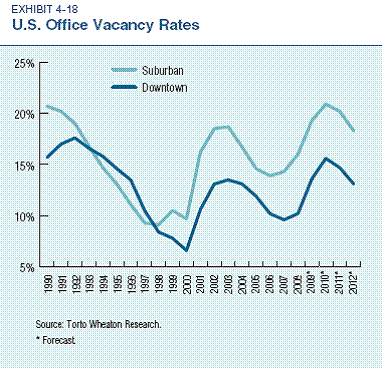
Major real estate report: shift to urban living is “fundamental,” outer suburbs may “lack staying power”

Last week the Urban Land Institute and PriceWaterhouseCoopers released their well-regarded annual analysis, Emerging Trends in Real Estate 2010. The report, which has been published for the last 30 years, aims to advise the industry "on where to invest, what to develop, which markets are hot, and how the economy, and trends in capital flows will affect real estate." Throughout the report's 80 pages, the tone is decidedly grim, with words like "abysmal" and "doom" sprinkled on almost every page. This is not a good time to have your money in real estate.
That said, it is clear that the authors, who surveyed over 900 industry experts - investors, developers, property companies, lenders, brokers, and consultants - believe that the prospects for investment are much stronger for smart growth than they are for sprawl. This is consistent with other data and analysis from the last couple of years. Here's an excerpt:
"Next-generation projects will orient to infill, urbanizing suburbs, and transit-oriented development. Smaller housing units-close to mass transit, work, and 24-hour amenities-gain favor over large houses on big lots at the suburban edge. People will continue to seek greater convenience and want to reduce energy expenses. Shorter commutes and smaller heating bills make up for higher infill real estate costs."
There's a lot more in the report on these topics as it goes through a more specific analysis of the various industry sectors. I have a summary of the report posted on my NRDC blog, and you can access the report in full here.


Comments
Write your comments in the box below and share on your Facebook!